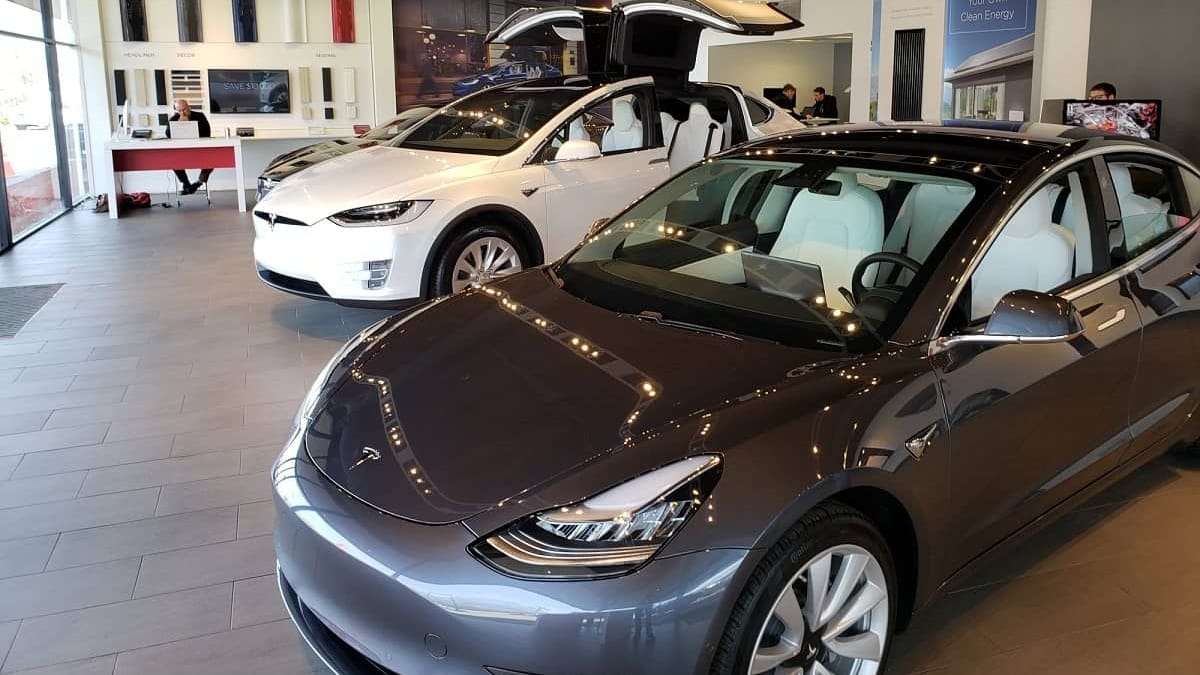Tesla’s Model 3 still has room for improvement when it comes to safety. The Model 3 recently earned the Insurance Institute for Highway Safety’s (IIHS) Top Safety Pick Plus rating. That puts the Model 3 in the grouping of the safest green vehicles its size alongside models such as the Honda Insight and Kia Niro which also earn that ranking. However, recent testing by the Institute shows that the Model 3 still has room to improve its driver-assist safety systems.
IIHS Pedestrian Crash Prevention Results – Model 3 vs. Subaru and Nissan
In recent testing by IIHS, the institute evaluated the pedestrian crash prevention systems of midsized vehicles. Included in the testing were sedans like the Model 3, the Audi A4, Volvo S60 and Nissan Maxima, along with the Midsized “wagon” the Subaru Outback. In the testing, the Audi, Volvo, Nissan, and Subaru all earned the highest possible rating, called “Superior” by IIHS. The systems on these models are all included as standard equipment. The Tesla Model 3 earned a score of “Advanced” by the Institute. The reason is that its system was less effective.
IIHS Crash Test Prevention Testing
IIIS conducts three tests for the pedestrian crash prevention systems. Here is what they are:
1) An adult pedestrian stepping into the street in the path of the oncoming vehicle with an unobstructed view
2) A child darting into the street from behind two parked cars
3) An adult pedestrian near the side of the road in the travel lane, facing away from traffic.
IIHS conducts the two perpendicular tests at both 12 and 25 miles per hour. The Institute test simulating a pedestrian walking in a parallel path to the vehicle is conducted at 25 and 37 mph. In both types of tests, the pedestrian detection system has 1 or 2 seconds to stop the car in order to avoid hitting the pedestrian dummy.
IIHS ratings are based on the average speed reduction the vehicle achieves in five repeated test runs. The vehicle's performance in the tests in which the dummy walks out into the road perpendicularly accounts for 70 percent of the overall score. Among the cars evaluated in this round of testing, the superior-rated vehicles reduced their speed dramatically thus eliminating or greatly reducing the risk of severe injury. IIHS noted that the Maxima avoided hitting the pedestrian in all six scenarios. More details on how IIHS conducts its scoring can be found on its information page.
In one of the tests, a child crossing in front of the vehicle, the Model 3 did not slow as well, or as fully, as the vehicles in the higher category.
IIHS Pedestrian Crash Prevention Results – Tesla Model 3
Like all vehicles that earned a score of “Advanced,” the Model 3 did perform speed reductions, though somewhat less consistently and less fully than the Superior rated vehicles. The chart below is the IIHS summary of the Tesla Model 3 results. You can view the full report on the Tesla Model 3 at the IIHS website.

As you can see, the Model 3 did not reduce its speed fully in the child tests. "The child dashing out from behind parked cars is a very challenging test," said IIHS President David Harkey. "But it's fitting that it was one of the main things that separated the top systems from the rest of the pack, since that is certainly a frightening scenario…”
Tesla Model 3 – Why Does This Result Matter?
Clearly, the Tesla Model 3 has proven itself a very safe vehicle for occupants. This testing relates to the safety of those of us in the public, outside of a Tesla Model 3. Given that Tesla is promising widespread deployment of its “Full Self Driving” technology in less than two months, we feel that reporting on the opportunities Tesla has for improvement in its safety systems are timely. If a "fully self-driving" vehicle cannot stop for children in the road reliably it should be improved before it is deployed.
In addition to covering green vehicle topics, John Goreham covers safety, technology, and new vehicle news at Torque News. You can follow John on Twitter at @johngoreham.






Comments
But the Tesla did not have
Permalink
But the Tesla did not have the problem of "not stopping for children in the road". It was a test to show how well it slowed down when a person darted out from between two cars (which is very difficult to react quickly to), and the Tesla did spot the dummy and slowed down, just not as quickly as the two top testers. I really wonder how humans would respond in such a drastic test, especially those that were distracted in conversation or texting. And Tesla's Autopilot is an active learning system that takes in all of the driving data from all of it's cars to improve it's accuracy and response. I do not know about the other safety systems, but they most likely do not employ active updated learning, so other that periodic software updates they will never improve. I am reminded regularly of the potential problems of false alerts that automatically force the car into a panic stop. My car (with an admittedly older safety system) has slowed/stopped object detection, and it occasionally flashes an incorrect warning that an object is stopped or significantly slowed in my path. Which gets my attention, but is no problem overall. But if it locked up the wheels in a panic stop at every false alert it would be far more dangerous in daily driving than the rare occurrence of having someone dart out into the road from in-between two cars.